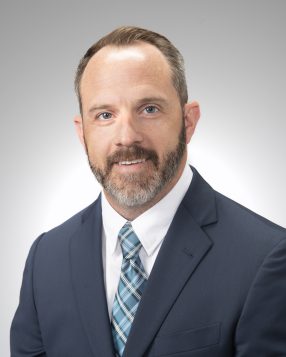
Nathan Formaini, DO, shoulder and elbow fellowship-trained orthopaedist and surgeon
Elbow and shoulder injuries are common, especially when these joints are prone to overuse and repetitive activities. The good news is that these types of injuries can frequently heal with rest, physical therapy, and medicine to treat the pain. They often don’t need surgery.
To stop elbow and shoulder injuries from getting worse, it’s vital to seek early treatment. Read more below about these injuries, their symptoms, and how doctors like Nathan Formaini, DO, at Three Rivers Orthopedic Associates, treat them.
Dr. Formaini is a shoulder and elbow fellowship-trained orthopaedist and surgeon. He and his team provide world-class elbow and shoulder injury treatment for patients in the Allegheny-Kiski Valley at locations, including UPMC St. Margaret and the UPMC St. Margaret Harmar Outpatient Center.
Never Miss a Beat!
Subscribe to Our HealthBeat Newsletter!
Thank you for subscribing!
You can now select the specific newsletters you'd like to receive.
You are already subscribed.
Subscribe to more newsletters in our email preference center.
Sorry, an error occurred. Please try again later.
Get Healthy Tips Sent to Your Phone!
Common Shoulder Injuries
Shoulder and elbow injuries are often due to tears in the tendons, the ropey tissues that connect bones to muscles. They make the joints move when the muscles flex. Other injuries may be to the bones or the muscles themselves.
Common shoulder injuries include:
- Fractures.
- Overuse injuries, such as tendonitis and bursitis.
- Rotator cuff tears.
Sometimes, injuries in the shoulder can even cause pain down the arm and into the elbow.
Rotator cuff tears
Shoulder fractures are cracks in one or more of the three bones in the shoulder. They often occur in older adults after a fall, but a broken shoulder bone can happen at any age.
Symptoms include:
- Pain when reaching over your head.
- Possibly a bump you can feel.
- Swelling.
The good news is that most shoulder fractures don’t need surgery. Instead, a well-fitted sling can stop the shoulder from moving as it heals.
For severe breaks, surgeons consider whether it is better to repair or replace the shoulder. A new shoulder implant can be a good option for people with fractures along with arthritis or an old shoulder injury.
Overuse injuries
When repeated use stresses the tendons of the shoulder, they can become inflamed and painful. This condition is called tendonitis.
Overuse can also cause inflammation in the bursa, a protective layer around the shoulder joint that lowers friction. This inflammation is known as bursitis.
“At UPMC St. Margaret, we often see patients with shoulder overuse injuries due to a new gym routine. As with all exercises, it’s vital to scale up slowly,” says Dr. Formaini.
With shoulder tendonitis, the pain often radiates down the arm toward the elbow. Some people may only have pain in the arm or near the elbow. Most people feel this pain when moving their arm.
Shoulder injury treatments for overuse injuries start with changing activities to give the tendons a chance to heal. Physical therapy is also crucial in healing, as making specific muscles stronger takes the pressure off the tendons.
Medicines and cortisone shots can also reduce pain. Platelet-rich plasma (PRP) shots may help heal the tendon tissue. Surgery may be an option in chronic and stubborn cases to remove inflammatory tissue and allow the tendons to move more freely.
Rotator cuff tears
Your rotator cuff is a group of muscles and tendons all around the shoulder joint that keep it in place and produce shoulder motion. The rotator cuff has four main tendons, and one or all of them can tear.
A fall can damage the rotator cuff, but these injuries often occur from wear and tear. These injuries are more common with age, happening mostly after age 50.
“Once the rotator cuff tears, it won’t usually heal on its own. If people continue with their typical activities, the tear will likely worsen, leading to more pain and weakness over time,” says Dr. Formaini. “If you think you may have a rotator cuff injury, it’s vital to have it checked out.”
Damage to the rotator cuff may feel like:
- Pain that worsens over many weeks.
- Pain that makes it difficult to sleep.
- Weakness in the shoulder.
Treatment for a damaged rotator cuff depends on how severe the injury is. A doctor may determine this with magnetic resonance imaging (MRI) and by evaluating pain levels.
In many cases, treatment for patients may start with an arm sling and anti-inflammatory medicine to allow the tear to rest and treat pain. Physical therapists may also help treat patients through massage, heat and ice application, along with exercise.
If these methods don’t help alleviate the pain, surgery may be a good next option.
Through minimally invasive surgery using a scope, surgeons can put the tendon back on the bone using advanced suture and fixation methods. These new techniques can shorten recovery time down to less than six months, compared to a year.
Treating Common Elbow Injuries
Most elbow injuries happen due to overuse. Common elbow injuries include:
- Golfer’s elbow – a form of overuse injury where the inner elbow tendons become sore.
- Tennis elbow – a form of overuse injury where the tendons connecting to the outer elbow become inflamed.
- Elbow fractures.
Golfer’s elbow and tennis elbow
Overuse injuries in the elbow develop when repetitive motions damage the elbow tendons.
Many think ‘golfer’s elbow’ or ‘tennis elbow’ only happens from repetitive movements in golf or tennis. But these tendon injuries are caused by many other daily activities.
“We often see patients with these injuries because of repetitive office work, like clicking and moving a mouse. Athletes who throw overhead, in football or baseball, are also prone to elbow tendonitis,” says Dr. Formaini.
Symptoms of elbow tendonitis are:
- Pain either in the inner elbow and forearm, or the outer elbow and forearm.
- Pain with movements, such as twisting the wrist, making a fist, or bending the elbow.
- Swelling of the elbow.
Elbow injury treatment for overuse includes rest, pain medicine, and, if necessary, shots of medicine. In rare cases, people may get chronic elbow tendonitis that doesn’t go away, which could require surgery to repair the tendons.
Elbow fracture
Elbow fractures can often happen from falls, as people may brace a fall with the elbow. An elbow fracture may make it impossible to straighten the arm and, of course, will cause pain. Many people will have swelling and bruising as well.
Many elbow fractures will heal if kept in place with a sling or brace. Doctors treat pain with medicine and frequently use ice and elevated arm positions to reduce swelling.
Some elbow fractures are severe enough to need surgery. Experts at UPMC specialize in fixing the many fractures that occur around the elbow. This typically requires the use of specialized implants such as plates and screws. Although rare, some people with severe arthritis in addition to a fracture may benefit from surgery to implant a new elbow.
Getting You Back on Your Feet
In addition to minimally invasive repair surgeries, Dr. Formaini and his team specialize in shoulder replacement procedures. According to him, “Research shows that shoulder replacement patients have better outcomes when treated by high-volume surgeons and at high-volume hospitals. Greater experience with these procedures improves results and reduces complications.”
Dr. Formaini prioritizes non-surgical options, including physical therapy and medicine. When surgery is needed, his team considers the best approach to improve recovery time and stop pain from returning.
He adds, “Whenever possible, our UPMC doctors, nurses, and physical therapists focus on getting patients back to the activities they love.”
Schedule an appointment with Dr. Formaini.
Sources
Note that I didn't include a source list because the information largely came from Dr. Formaini, as this is a reported story. (Otherwise, I relied on Mayo, Johns Hopkins, etc)
About UPMC Orthopaedic Care
When you are dealing with bone, muscle, or joint pain, it can affect your daily life. UPMC Orthopaedic Care can help. As a national leader in advanced orthopaedic care, we diagnose and treat a full range of musculoskeletal disorders, from the acute and chronic to the common and complex. We provide access to UPMC’s vast network of support services for both surgical and nonsurgical treatments and a full continuum of care. Our multidisciplinary team of experts will work with you to develop the treatment plan that works best for you. Our care team uses the most innovative tools and techniques to provide better outcomes. We also are leaders in research and clinical trials, striving to find better ways to provide our patients care. With locations throughout our communities, you can find a provider near you.
